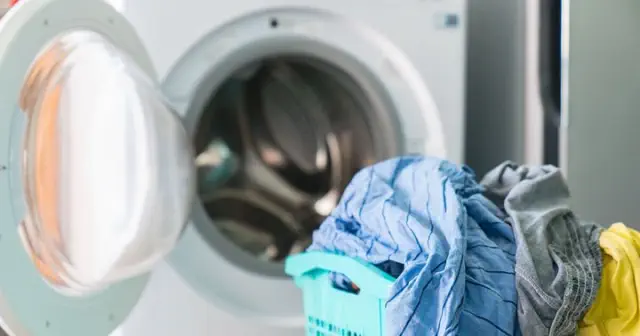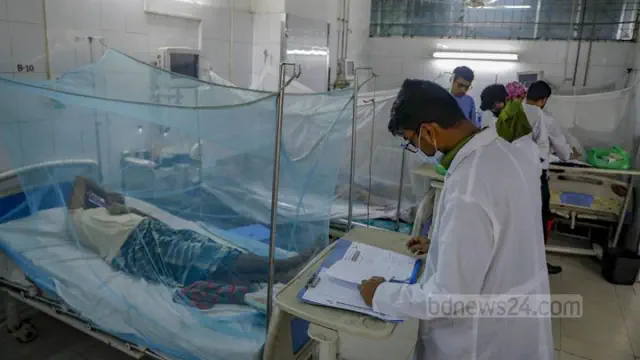Did you realize that bottled water and tap water are subject to different regulations?
It's estimated that Americans purchase 50 billion plastic water bottles per day, averaging 13 bottles a month for every person in the U.S. This isn't too surprising considering that nearly 20 percent of Americans only drink bottled water, according to a survey conducted by The Harris Poll on behalf of the International Bottled Water Association (IBWA). Conversely, just eight percent say they primarily drink tap or filtered water—but this minority might be onto something. According to a new study, there are "potential risks" associated with plastic water bottles that most people aren't aware of, making tap water the healthier choice.
Bottled water is not subject to the same regulations as tap water.
Published in the journal BMJ Global Health, the new study concludes that "misunderstandings about the safety and potential risks of bottled and tap water persist."
The biggest misunderstanding may be that bottled water (BW) isn't regulated in the same way as tap water, which is overseen by the Environmental Protection Agency (EPA). Bottled water is under the jurisdiction of the Food & Drug Administration (FDA).
For their part, the FDA says they ensure "the quality standards for bottled water are compatible with EPA standards for public drinking water."
Nevertheless, the research indicates that bottled water producers "are not required to reveal the existence of microbial or chemical pollutants. They are not obligated to prove that their products comply with particular quality benchmarks or follow rigorous inspection processes."
The EPA, on the other hand, must adhere to the 1974 Safe Drinking Water Act (SDWA), which sets legal limits on over 90 drinking water contaminants. Municipal water systems must then report their water quality to the EPA.
Research indicates that bottled water contains microplastic contaminants.
In the past few years, a significant portion of the conversation about bottled water has focused on the issue of microplastics.
The authors of the study highlight that "Plastic pollution is prevalent in bottled water, with findings indicating that between 10% and 78% of bottled water samples are affected." Their research suggests that various contaminants may be found in your plastic water bottle, including:
- Microplastics
- Phthalates
- Alkylphenols
- Polychlorinated biphenyls
- Polyfluoroalkyl substances
- Bisphenol A (BPA)
For example, a 2024 study published in the journal Proceedings of the National Academy of Sciences (PNAS) found that plastic water bottles can contain 10 to 100 times more nanoplastics than researchers previously showed (nanoplastics are even smaller than microplastics and, therefore, can be harder to detect). As the study put in perspective, drinking water from just two plastic bottles could result in one digesting 110,000 to 370,000 nanoplastics.
Even more alarming, a 2018 study published in the journal Frontiers in Chemistry concluded that 93 percent of plastic water bottles "showed some sign of microplastic contamination."
"It is estimated you eat about a credit card's-worth of plastic a week, and these invisible particles are one of the main culprits," naturopathic doctorHeather Wilde, NMD, previously explained to Best Life.
Here are the potential health hazards associated with the consumption of microplastics.
Research is constantly expanding on the health risks of ingesting microplastics, but many are already well-established, as the BMJ study notes:
"Research has shown that microplastic pollution is linked to oxidative stress, disruptions in immune function, and possible obesogenic impacts due to changes in lipid metabolism. These pollutants are often categorized as endocrine disruptors, which can interfere with the proper functioning of reproductive hormones, thyroid hormones, and glucocorticoid receptors, particularly during essential stages of embryonic development."
They note that BPA has been linked to conditions such as "hypertension, cardiovascular disease, diabetes, and obesity."
The BMJ study also noted the presence of phthalates, chemical compounds used to make plastic more durable that are also classified as endocrine-disrupting chemicals (EDCs).
As Best Life previously shared via The Washington Post, "studies have linked phthalate exposure to impaired cardiovascular health, prenatal neurological effects, and an increased risk of obesity, insulin resistance, and diabetes. In adolescents, phthalates have been tied to increased ADHD-related behavior problems and poorer academic performance in math."
When plastic water bottles are kept in high-temperature conditions, there is a greater chance that microplastics will seep into the water.
Is tap water consistently safe to drink?
Another significant misconception regarding bottled water is that, according to the study, as much as two-thirds of it in the U.S. consists of merely repackaged tap water. This means that in essence, you might be drinking the same water, but with the added risks associated with its plastic packaging.
Is tap water always the safest choice?
According to the Centers for Disease Control and Prevention (CDC), while public tap water in the U.S. is "usually" safe to drink, it sometimes gets "contaminated with chemicals that can make you sick."
Some of the most common ways this happens, the CDC states, are:
- Fertilizers or pesticides applied to land near the water source
- Rocks and soil that naturally contain chemicals like arsenic or radon
- Contaminated stormwater
- Leaks from landfills or underground fuel tanks
- Sewer or septic system overflows
To ensure your local drinking water is safe, the CDC suggests reviewing the mandatory water quality report your municipality must submit.
Cleveland Clinic recommends installing your own filtration system (like a Brita) and periodically using a home water testing kit.
"It’s fine to drink tap water. But I encourage people to know what’s in their tap water because you don’t want to introduce more toxins and germs into your body," functional medicine specialistErik Modlo, MD, told Cleveland Clinic. "Getting your tap water tested is an easy step to protect your family’s health."










